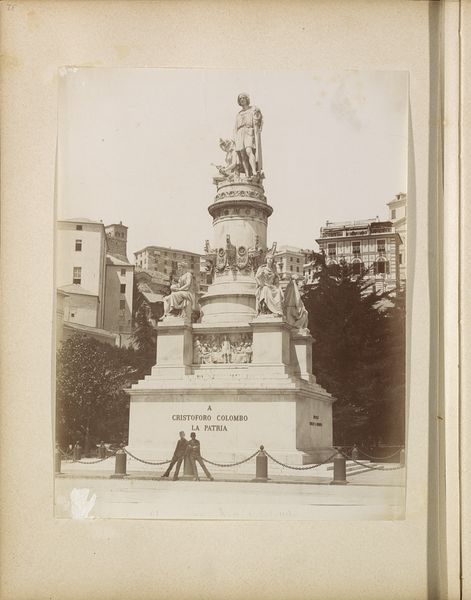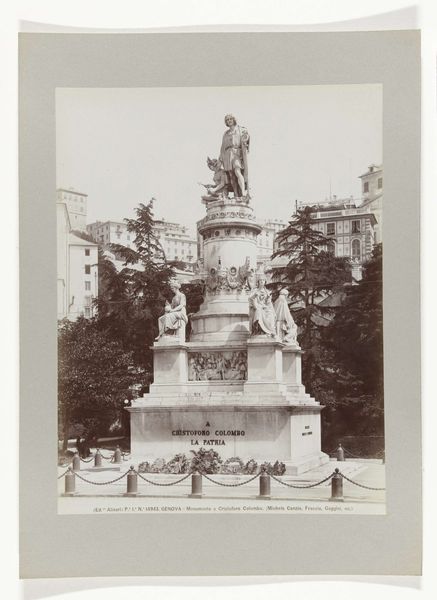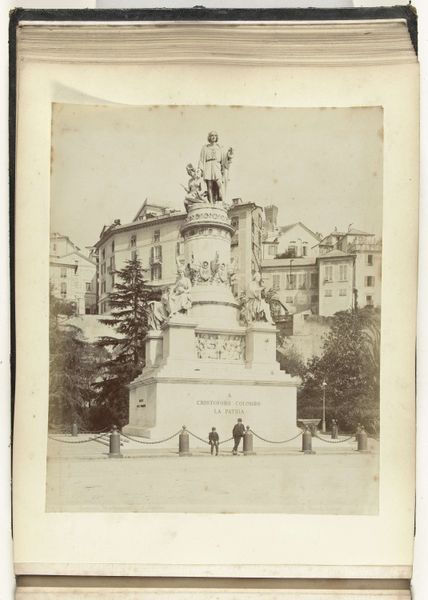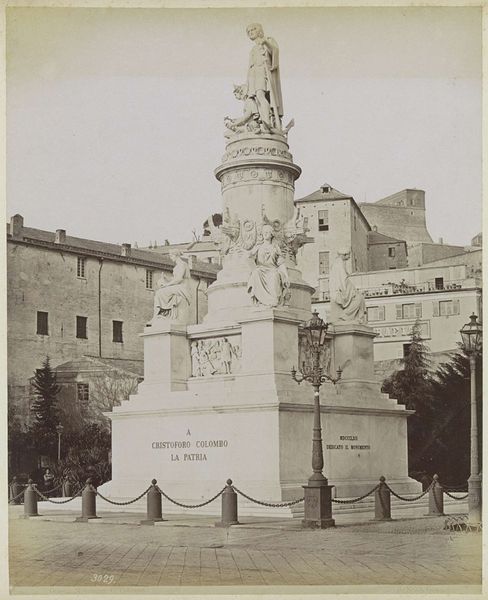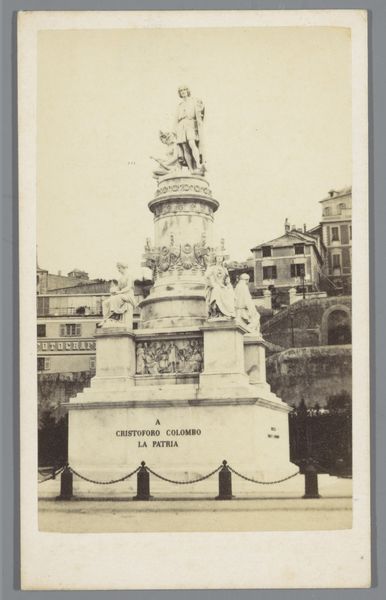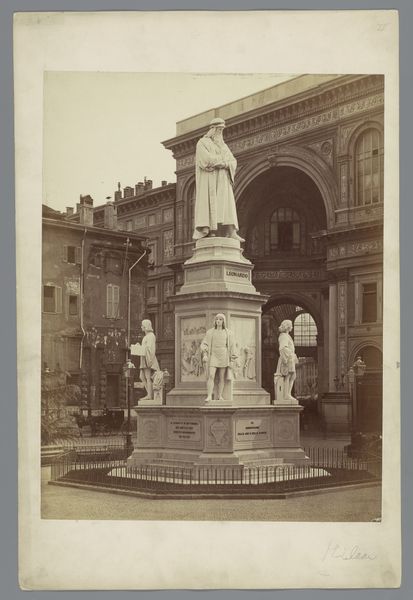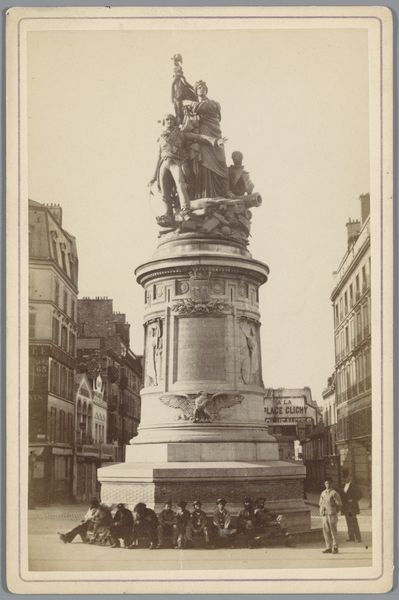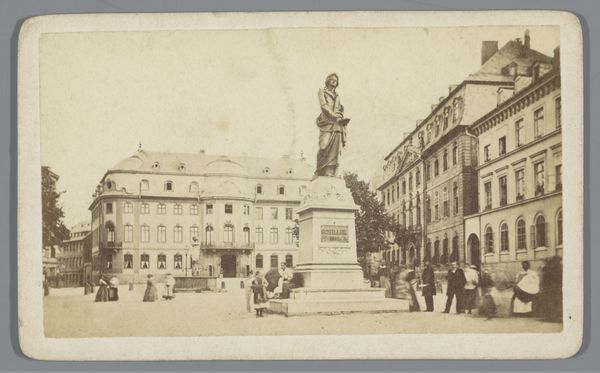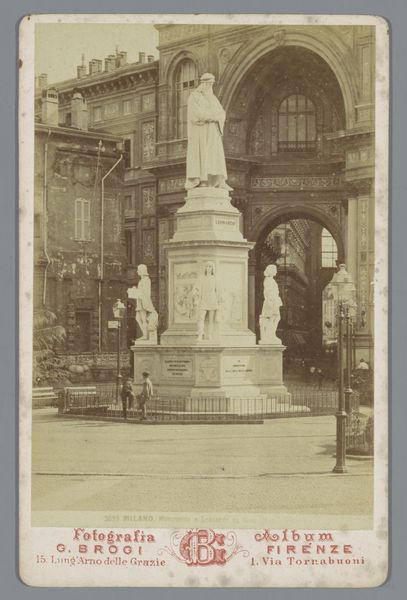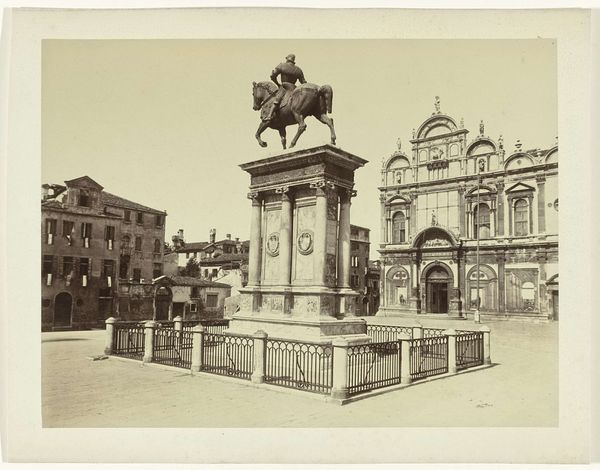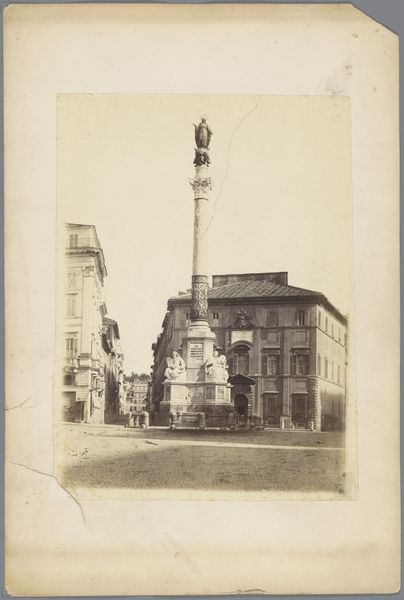
Dimensions: height 292 mm, width 224 mm
Copyright: Rijks Museum: Open Domain
Editor: Here we have an albumen print, a photograph, of the "Monument for Christopher Columbus in Genoa," taken sometime between 1885 and 1892. Looking at this sepia-toned image, the monument appears imposing, very much of its time, celebrating a historical figure. What strikes me is its place in the cityscape; it’s meant to dominate, but also fit within the urban landscape. How do you interpret this work? Curator: This photograph encapsulates the late 19th century's complex relationship with historical narratives. The monument, a neoclassical celebration of Columbus, needs to be understood within its specific historical moment of colonial expansion and nation-building. Consider who commissioned it and why. It served as a potent symbol of Italian national identity and ambition, simultaneously glossing over the devastating impact of colonialism on indigenous populations. What stories are absent from this triumphant representation? Editor: That's a really important point – about the absent stories. I hadn't considered the indigenous perspective. The monument then becomes less about simple commemoration, and more about power. Curator: Precisely. Think about the intended audience and the message it conveys. Who benefits from this narrative, and whose voices are suppressed? Understanding the monument requires critically analyzing the context of its creation, revealing uncomfortable truths about the legacy of colonialism and its enduring impact on marginalized communities. Does seeing it that way shift your perspective? Editor: It certainly does. It reframes the entire photograph, and it highlights photography's own role in perpetuating certain historical narratives and obscuring others. The crisp details and formal composition create an illusion of objectivity. Curator: Absolutely. Historical photographs like this aren't neutral documents; they’re constructed images reinforcing certain power dynamics. By acknowledging that, we can engage with them more critically and seek out alternative narratives. Editor: Thanks, this has been eye-opening! I definitely look at the monument, and photography, differently now.
Comments
No comments
Be the first to comment and join the conversation on the ultimate creative platform.
